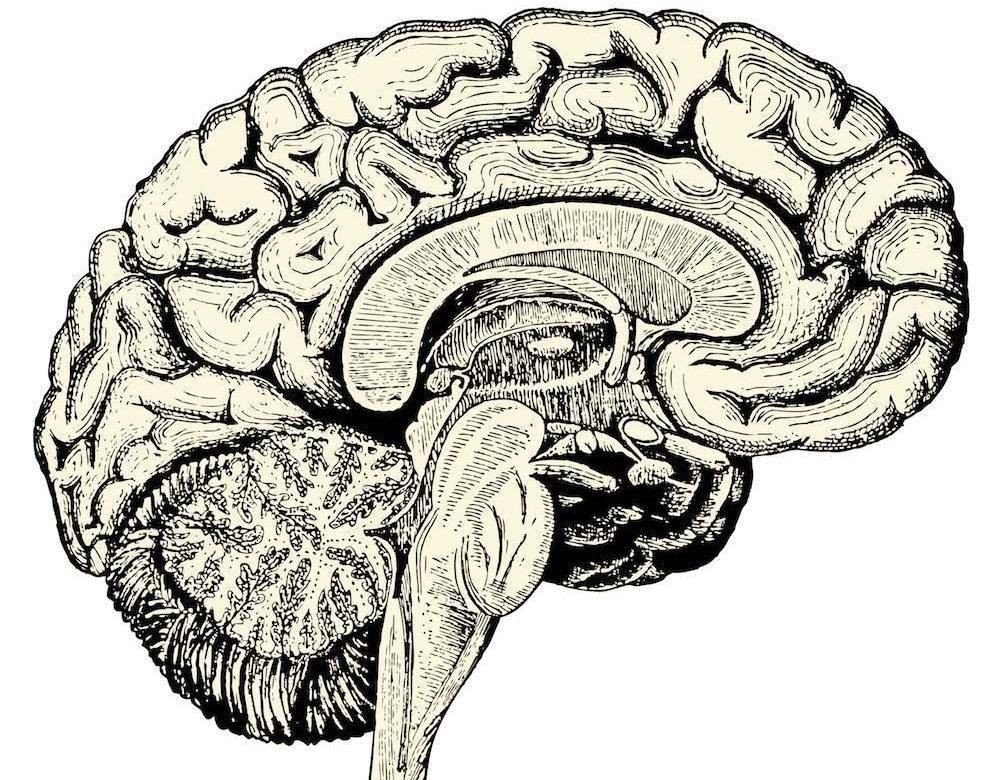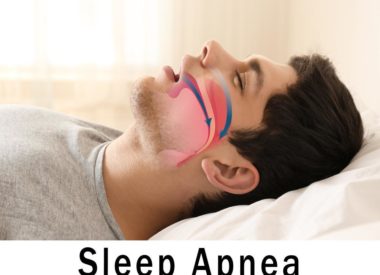Sleep apnea and brain damage: one more reason to wear your CPAP mask
Obstructive sleep apnea (OSA) has been linked in multiple studies to brain damage in those who have the sleep disorder but are not treating it.
Its estimated that at least 18 million Americans have sleep apnea, and that anywhere from 40 to 80 percent of them are not even aware they have it.
OSA is already associated with other acute health problems such as hypertension, cardiovascular disease, glucose intolerance, impotence, gastroesophageal reflux disease (GERD), neurological disorders, and problems with the brains vascular system.
Brain damage as a result of untreated OSA is yet one more reason to consider a trip to the sleep center if you suspect you have a sleep-related breathing disorder.
Breathing and the brain
During the day, your brain regulates breathing by two divisions of the peripheral nervous system:
-
Autonomic nervous system:This regulates our breathing without us thinking about it.
-
Somatic nervous system:This allows us to consciously and voluntarily breathe whenever we want.
Normal sleep breathing versus sleep apnea
During sleep, your brain regulates breathing almost entirely through the autonomic nervous system. However, when OSA occurs, a subsystem of the autonomic nervous system, the sympathetic nervous system, must also be called into action.
OSA occurs when the tone of muscle and tissue in the upper airway is lost during sleep, resulting in its partial or complete collapse.This blockage limits airflow for several seconds at a time, even when the brain signals to the body to breathe.
Eventually, the autonomic nervous system notes the drops in blood oxygen and sends out alarms that force an arousal by way of the sympathetic nervous system. This leads to the launch of conscious breathing to allow tone to return to the upper airway, correcting imbalances in oxygen and carbon dioxide in the bloodstream.
Gas exchange 101
One of the chief reasons we breathe is to promote gas exchange. We inhale oxygen into our lungs; it is delivered by blood cells through our arteries to the organs to fuel cell activity.
Our cells are busy little factories which generate a waste product known as carbon dioxide. The veins bring that carbon dioxide back to the lungs to exhale.
Breathing keeps these two chemical elements in our bloodstream in good balance. Too much or too little of either, however, leads to troubling consequences if these imbalances aren’t corrected.
The chemical roller coaster of OSA
Last February, David DiSalvo, in an article in Forbes magazine, aptly characterized the changes that untreated sleep apnea imposes on the brain and respiratory system as a “chemical roller coaster.”
What he’s referring to is a chemically induced pattern of sleep breathing called hypoxemia-reoxygenation. First:
-
Pauses in breathing (apneas)are followed by
-
drops in oxygen (hypoxia) and rises in carbon dioxide (hypercapnia) in the bloodstream, which are followed by
-
arousals(orsleep fragmentation) leading to
-
there oxygenation of the bloodstream.
Rather than a rhythmic ebb and flow of inhale and exhale that is part of normal breathing during sleep, this pattern is one of interruptions and compensations. It should come as no surprise that it has a huge impact on brain health.
The brain without oxygen
While OSA is thought to be a mechanical issue of the upper airway, researchers are finding that, if left untreated, it can lead to actual changes in the structure and volume of the brain itself.
These changes create the perfect conditions for serious brain concerns such as seizures, dementia, learning disabilities, and hyperactivity.
How does this happen?Low blood oxygen leads to intermittent hypoxemia, the outcome of the stressful hypoxemia-reoxygenation cycle. Intermittent hypoxemia constricts blood vessels. This not only contributes to hypertension during sleep, but to changes in brain tissues.
How OSA damages the brain
The brain is mainly composed of gray and white matter.
Gray matter is found in the brain and spinal cord; you can think of gray matter as the mainframe computer in your body.
White matter is composed of the neural pathways linking the gray matter together; think of it as the network of cables that connect the mainframe to the rest of the body.
Studies done in 2010 showed that untreated OSA patients had low gray matter volume. This was associated with memory and attention deficits, struggles with executive function, greater incidence of excessive daytime sleepiness, and problems with regulating mood.
More recently, UCLA researchers found new evidence that OSA also weakens something known as the blood brain barrier.
The brain has its own “shield” which prevents harmful microorganisms, infections, and substances from accessing its tissue.However, this “blood brain barrier” (BBB) can be compromised by certain kinds of chronic health problems, including OSA, and this can lead to damage.
Dr. Rajesh Kumar, the UCLA study’s lead investigator, says their research shows that”the blood brain barrier becomes more permeable in obstructive sleep apnea, a breakdown that could contribute to brain injury, as well as potentially enhancing or accelerating the damage.”
What are the consequences?”This type of brain injury in obstructive sleep apnea has significant consequences to memory, mood and cardiovascular risk, says Kumar.
The subjects they studied were patients newly diagnosed with OSA who had not yet started treatment. Researchers found their BBB permeability to be significantly higher when compared against normal subjects who did not have OSA.
Research at UCLA, prior to this study, has already shown how untreated OSA affects the brain’s vascular system, leading to hypertension, a known risk factor for stroke.
OSA is now recognized clinically as a cause for brain injury associated with these risk factors:
-
cognitive decline (including dementia and Alzheimers disease)
-
heart disease
-
reduced quality of life
-
higher incidence of workplace errors
-
more accidents while on the job or behind the wheel of a vehicle
Treating sleep apnea to heal the brain
The best solution at hand for preventing further brain damage and healing injury? Continuous positive airway pressure (CPAP).
Researchers examined brain damage in OSA patients to see if they could measure any positive effects from using CPAP therapy.
What they found: In OSA patients not using CPAP, brain damage was widespread, while those who used CPAP showed an increase in the volume of gray matter.
Brain damage caused by OSA may not always be permanent, and with vigilant use of CPAP, it may even be reversible.
Researchers may still be refining how the “signature” of OSA affects the structure of the brain, but what they do know with certainty is thatOSA is not a single health concern, but a chronic (long-lasting) condition which has a negative impact on multiple body systems. It is more prevalent that people are aware of, which means it can go undiagnosed for a long time before it’s detected and treated.
Fortunately, the news about using CPAP to reverse damage to gray matter caused by OSA is encouraging and should become yet one more good reason to stick with therapy.
Sources
American Journal of Respiratory and Critical Care Medicine
CHEST
Current Opinion in Pulmonary Medicine
Forbes
Human Brain Mapping
Journal of the American Heart Association
Journal of the International Neuropsychological Society
Journal of Neuroimaging
National Sleep Foundation
SLEEP



